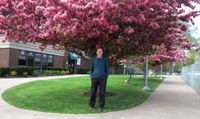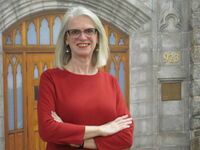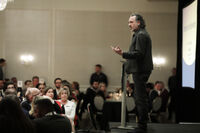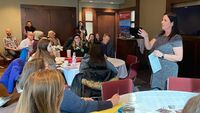By Dr. David Richardson |
When I arrived at Saint Mary’s University as Dean of Science in the autumn of 1992, I noticed a lack of young trees on the campus and uninteresting wide open spaces. Many of the existing trees were clearly nearing the end of a long life, and there was a very limited number of species growing on the campus.
With a small budget available to me as Dean, I purchased a collection of small trees less than two metres tall from local nurseries. These were planted by the late Gordon Grovenstein and Carmen Cranley, both technicians in Biology, along with several faculty members in the Biology Department, and student volunteers. The first trees were planted in the spring of 1993 and annually thereafter.
As a botanist by training, I selected species that were of botanical interest like ginkgo and dawn redwood, (alive at the time of the dinosaurs) and species that were threatened or endangered in Canada such as the butternut, pawpaw and hickories. The aim was to have a wide variety of trees on campus that were both visually pleasing (like our collection of magnolias) and useful teaching and research subjects. One SMU student decided to study the biology of silk worms and used the leaves of the mature white mulberry on campus for the project.
In total, over 100 different tree species were planted around the Saint Mary’s University campus by volunteers, a process that continued until my retirement in 2006.
Many of the first trees we planted are now large like the black walnut, European larch, and hackberry. Others are so unusual that they still attract attention, like the brightly coloured capsules and seeds of the spindle tree.
After I retired, the University employed a landscaping firm to plan and plant trees, a situation which has sometimes resulted in repeated plantings of the same species that are not needed as teaching tools. However, for specialty trees, my advice was and is still sought. The result of 25 years of attention and effort has been that first group of trees are now of significant size and make for a unique and visually appealing campus experience. Tree identification labels containing their English and Latin botanical names are put out each spring and taken in each autumn.
Thanks to this long-term campus greening initiative, visitors and students alike can learn a lot about both native Canadian and exotic decorative trees right in their own backyard.




